Edinburgh‘s Whisky History by Iain Russell, Part 1: Distilling
Edinburgh is the political and cultural capital of Scotland, the home of the Scottish Parliament and the world-famous Edinburgh Festival. But it has many more claims to fame, not least as the historic hub of the Scotch whisky trade.
Today the city is home to the influential trade association The Scotch Whisky Association; the famous tourist attraction The Scotch Whisky Experience and the flagship Johnnie Walker Princes Street brand experience; the proudly independent Scotch Malt Whisky Society and iconic whisky stockists such as Royal Mile Whiskies and Cadenheads.

The excellence of the research and teaching facilities at Heriot-Watt University’s International Centre for Brewing and Distilling is recognised worldwide and many of our most talented distillers have studied there. And while the long-established North British Distillery remains an Edinburgh institution, the new Bonnington, Holyrood and Port of Leith distilleries have all begun making whisky and headlines in the 2020s.
But Edinburgh’s central role in the whisky trade is nothing new – the city can boast a history of whisky-making stretching back more than 500 years.
The Exchequer Rolls of Scotland provide the first known reference to the manufacture of spirits in Scotland from malted cereal – it is recorded in 1494/5 that King James IV provided Friar John Cor with 8 bolls of malt ‘wherewith to make aqua vitae’. Contemporary records suggest that Cor was a Dominican monk attached to the order’s priory there, and he may have been charged with transferring the malt to a local distiller. Certainly, we know that Edinburgh was by then well known for malting and brewing and there is evidence from few years later to suggest there were distillers producing grain-based spirits which we would recognise today as whisky.
During the early 1500s, James IV purchased some of his supplies of ‘aquavitae’ from an Edinburgh barber. At that time, barbers were often called upon to perform basic surgery, and spirit alcohol was used extensively in the treatment of wounds and production of medicines. Their professional interest in spirits production was recognised by the Town Council in 1505, when the Incorporation of Surgeons and Barbers of Edinburgh were granted a monopoly of the manufacture and sale of ‘aqua vitae’ within the burgh. However, with the increasing popularity of spirit drinking for pleasure, enterprising citizens surreptitiously distilled their own whisky in small stills and sold it within the burgh boundaries, ignoring the Incorporation’s exclusive rights. Many of these ‘private distillers’ were women: one of the first to appear in the records was Bessie Campbell, ordered by the Town Council in 1556 to ‘desist and ceis fra ony forthir making of aquavitae within this burgh in tyme cumyng or selling of any therein except on the market day.’
The surgeons and barbers subsequently parted company, each to concentrate on their own professional specialisms, but the Incorporation had long lost its tenuous grip on the city’s whisky trade. By 1777 it was estimated that there were as many as 400 ‘private distillers’ furtively making and selling whisky in Edinburgh, ignoring a legal obligation to pay Excise duty on their spirits.
The whisky industry entered a new era at the end of the 18th century, when technological innovations and demand from England for raw spirit for making gin encouraged the construction of large distilleries in the Scottish Lowlands. Edinburgh was home to two of the new megalithic establishments, built by members of the famous Haig distilling dynasty: one (the Lochrin Distillery) near Tollcross, and the other in Canonmills, a suburb on the south bank of the Water of Leith. The latter was to become the scene of some of the most violent disorder in Scotch whisky history, and the first (and only?) recorded instance of a fatal shooting at a distillery.

Canonmills Distillery. Find out more here.
The Canonmills Distillery riot had its roots in a series of calamitous harvest failures in the early 1780s which had resulted in widespread famine across large areas of Scotland. In Edinburgh, food prices soared and hungry citizens were incensed by rumours that the owner James Haig was stockpiling grain and vegetables in his warehouses. In June 1784 an angry mob marched on the distillery and rioters began pelting the buildings with stones. A group attempted to storm the perimeter, breaching a section of the wall and breaking open the main gate. But they met with a deadly response.
Haig had issued his employees with firearms. As the insurgents began rushing through the demolished gateway, two of the defenders opened fire. One of the attackers was killed and his comrades fell back in disorder. They regrouped outside the distillery, incensed and belligerent.
Haig attempted to mollify the angry mob by announcing that he would pay for the burial of the dead rioter, and ‘provide for his aged parents for so long as they may live.’ But it was not enough to quell their anger and there were fears of a renewed assault. A party of soldiers was despatched from Edinburgh Castle, supported by dragoons from their barracks in Leith, and they lined up in front of the distillery with loaded muskets and fixed bayonets. After a tense standoff, a local magistrate appeared on the scene and persuaded his fellow-citizens to disperse.
Sadly, the violence did not end there. The men who had fired the fatal shots were summoned by the sheriff to face charges, and the dragoons were instructed to escort them to the Tolbooth. As they made their way through the streets, however, they were ambushed by vengeful rioters who pelted the column with volleys of stones. Several soldiers, their commanding officer and the two distillery men were injured in the attack. One of the workers later died from his wounds. What a local newspaper called the ‘ignorant and unthinking’ mob moved on, and later burned down a distillery in the nearby village of Ford.
 Aris’s Birmingham Gazette 14 June 1784.
Aris’s Birmingham Gazette 14 June 1784.
Such hostility to the city’s distilleries was atypical and short-lived. Distilleries provided many benefits to the local economy, offering steady employment to their workers, regular orders for grain merchants and other suppliers, and streams of contracts for builders, engineers, coppersmiths and other skilled tradesmen. Lochrin and Canonmills distilleries went on to have chequered histories, as the various owners’ business affairs waxed and waned over the following decades, and they were joined by many more in Edinburgh as whisky-making boomed in Scotland. Distilleries such as Abbeyhill, Yardheads and Bonnington in Leith; Dean and Sunbury near Dean Village and Glen Sciennes (later renamed the Edinburgh Distillery by Andrew Usher) in Newington were initially equipped with pot stills. However, after the widespread adoption of Aeneas Coffey’s continuous still in the mid-19th century, Bonnington and Sunbury were equipped with the new apparatus. The huge Caledonian near Haymarket Station, built in 1855, became one of the largest grain whisky distilleries in the country, but was also equipped with two large pot stills to produce a popular Irish-style whisky. The Caledonian was closed in 1988, and buildings that were not demolished have been converted to housing.

Alfred Barnard, The Whisky Distilleries of the United Kingdom 1887.

Alfred Barnard, The Whisky Distilleries of the United Kingdom 1887.
Edinburgh’s place at the heart of the grain whisky business was confirmed in 1877 with the amalgamation of the Scotland’s leading grain distillers – subsequently joined by the Caledonian – to form The Distillers Company Ltd, an ancestor of today’s international spirits group, Diageo. The new company had its headquarters in Torpichen Street and was nicknamed ‘The Torpichen Leviathan’ by competitors who were intimidated by its relentless expansion and influence in the Scotch whisky industry over the following years. The head office of DCL, Scotland’s largest whisky company, remained at Torpichen Street until the 1930s and Diageo maintains its Scottish headquarters in the city to the present day.

The greatest fear in the Scotch whisky trade was that DCL would gain a monopoly of grain whisky production in Scotland and be able dictate prices to the producers of successful brands of blended Scotch such as Usher’s OVG, Mountain Dew and Vat 69. In 1885, established Edinburgh blenders and brokers such as Andrew Usher, William Sanderson and John Crabbie joined forces with others to form the North British Distillery Company and build a vast new grain distillery in the city’s Gorgie area, to safeguard their access to essential fillings for their blends. The business was run successfully by a cooperative of Scotch whisky companies until it was acquired in 1993 by Lothian Distillers, a joint venture by Robertson & Baxter and International Distillers & Vintners. In 1997 Lothian Distillers merged with United Distillers, ironically a DCL successor company, and the distillery is now owned by Edrington and Diageo.

North British Distillery, Gorgie, Edinburgh.
In contrast to the grain distilleries, Edinburgh’s pot still distilleries did not prosper in the 20th century. None survived beyond the 1920s and it seemed that the era of single malt whisky making in the capital had ended. However, the spectacular revival of interest in the category since the 1980s has prompted exciting new developments. Holyrood Distillery opened in 2019, the first new distillery in the capital for more than 100 years. Bonnington opened in Leith the following year: it was built by Halewood International, the owners of the long-established John Crabbie & Co, which had been a prominent local business for generations. Finally, work began on the construction of the unique 9-storey Port of Leith Distillery in 2019, and the distillery opened in 2023 to provide the old port with another distillery, a popular visitor attraction and an unmistakable feature on the skyline.
Edinburgh distilleries are back with a bang – in a good way!
In Part 2 (coming soon), we’ll look at the story of Edinburgh’s whisky brands, blends and bottlers.


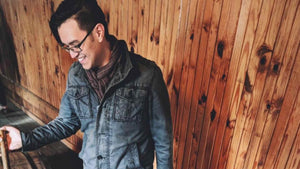
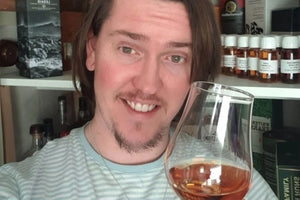
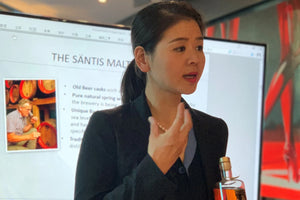

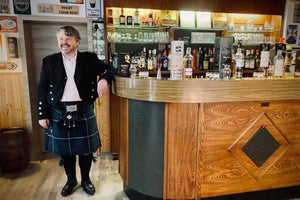
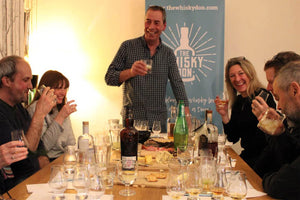


1 comment
This was a terrific article. I am one of the descendants of Andrew Usher I and II (but on the brewing side, he was a great x 4 uncle). My grandfather sold his shares in the brewery to come to Canada in 1903 and began ranching (his ranch grew to be almost 20,000 acres) but we still have a farm in Hawick where my cousins grow barley for Diageo). I am the first Usher back in the whisky trade since the early 1900s – I own a whisky store in Edmonton, Alberta, Canada. And yes, I have some bottles of Usher’s Deluxe Blended Whisky and a single bottle of the Old Vatted Glenlivet, Fun fact, my grandfather’s cattle brand was OVT (Old Vatted Tawny).
Best
Graham Usher